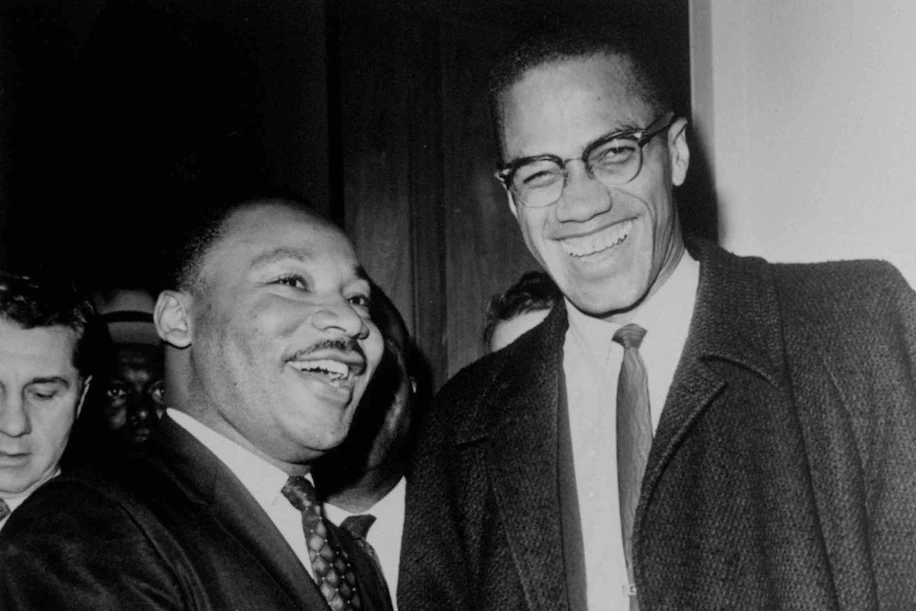Martin Luther King’s criticism of Malcolm X was a fraud

From Gillian Brockell at the Washington Post: "Jonathan Eig was deep in the Duke University archives researching his new biography of Martin Luther King Jr. when he made an alarming discovery: King’s harshest and most famous criticism of Malcolm X, in which he accused his fellow civil rights leader of “fiery, demagogic oratory,” appears to have been fabricated. “I think its historic reverberations are huge,” Eig told The Washington Post. “We’ve been teaching people for decades, for generations, that King had this harsh criticism of Malcolm X, and it’s just not true.” The quote came from a January 1965 Playboy interview with author Alex Haley, a then-43-year-old Black journalist, and was the longest published interview King ever did, but the entire quote was fabricated.
Brazilian authorities seize a wildlife influencer's pet capybara

From Matheus Andrade for Rest of World: "Wild animals are not pets,” posted Brazil’s environmental watchdog, Ibama, on social media after what appeared to be a standard confiscation. This, however, was not just any wild animal. On April 27, Ibama had taken Filó — a capybara from the Brazilian Amazon — from wildlife influencer Agenor Tupinambá. The development led to an uproar on social media. Tupinambá’s following on Instagram and TikTok blew up as supporters rallied to the cause of #FreeFiló. The influencer’s Instagram followers have grown from 10,000 at the end of last year to 2.2 million now; his TikTok following has nearly doubled to 1.9 million. “I am deeply sorry for what is happening,” Tupinambá said in a viral post. “Only I know the pain I am feeling. I chose to be a guardian, not a criminal.”
Former head of Soviet space agency says he doesn't think the US landed on the moon

Eric Berger for Ars Technica: "Dmitry Rogozin was fired as director general of Russia's main space corporation, Roscosmos, nearly a year ago. He has spent much of the time since near the front lines of Russia's invasion of Ukraine, sharing various hateful, threatening, and nationalistic sentiments on his Telegram account. Occasionally, however, the pugnacious politician still opines about space on his "Rogozin at the Front" social media account. During his four-year tenure at Roscosmos, Rogozin wrote, he asked his leadership team to look into whether NASA had actually landed a dozen astronauts on the Moon in the late 1960s and early 1970s. At the end of this "investigation," Rogozin said he does not believe Americans landed on the Moon but rather that they had succeeded in infiltrating the "establishment" of the Russian space program."
How we decided alcohol was a health boon in the ’90s—and how it all fell apart

From Tim Requarth at Slate: "In 1991 an academic debate spilled out of ivory towers and into the popular imagination. That year, Serge Renaud, a celebrated and charismatic alcohol researcher at the French National Institute for Health and Medical Research—who also hailed from a winemaking family in Bordeaux—made a fateful appearance on 60 Minutes. Asked why the French had lower rates of cardiovascular disease than Americans did, even though people in both countries consumed high-fat diets, Renaud replied, without missing a beat, “The consumption of alcohol.” Renaud suspected that the so-called French paradox could be explained by the red wine at French dinner tables. Now, 25 years later, you’re likely feeling a fair bit of whiplash. According to new guidelines released in recent months by the World Health Organization, the World Heart Federation, and the Canadian Centre on Substance Abuse and Addiction, the safest level of drinking is—brace yourself—not a single drop."
This little-known French archaeologist saved ancient temples from destruction

Michael Dirda from the Washington Post: "The subject of Lynne Olson’s excellent biography “Empress of the Nile” isn’t, as you might think, Cleopatra, but rather the “daredevil archaeologist” Christiane Desroches-Noblecourt, best known for helping save massive ancient temples from destruction. Olson presents this female Egyptologist as the driving force behind an astonishing instance of international cooperation, even if her role at the time was often scarcely acknowledged. Others — all male — jockeyed for the limelight, while Desroches-Noblecourt cared less about the credit than about actually getting the job done. Christiane Desroches — she later added her husband’s name to her own — was born to an upper-middle-class Parisian family in 1913. From an early age, she was fascinated with Egypt, hieroglyphs and stories of archaeological discovery."
The story behind the Great Moon People hoax of 1835

From Dave Kindy at the Washington Post: "The Great Moon Hoax emerged from a series of newspaper articles describing newly discovered life on the moon, including winged humanlike creatures and never-before-seen species of flora and fauna. Readers were astounded by the reports in the New York Sun, which were reprinted in many newspapers in the United States and Europe. The articles, purportedly written by Dr. Andrew Grant, detailed the discoveries of Sir John Herschel, a widely known astronomer who in real life had speculated on the possibility of life on the moon. The Sun ran six articles on the discoveries over the course of a week beginning on Aug. 25, 1835. The stories included amazing descriptions of life on the moon, as viewed through an enormous telescope with “hydro-oxygen” lenses built by Herschel at an observatory in South Africa."
Flipbook art
I don't know who did this but wonderful art. 👌 pic.twitter.com/F5wHimKXIG
— The Best (@Figensport) May 12, 2023



